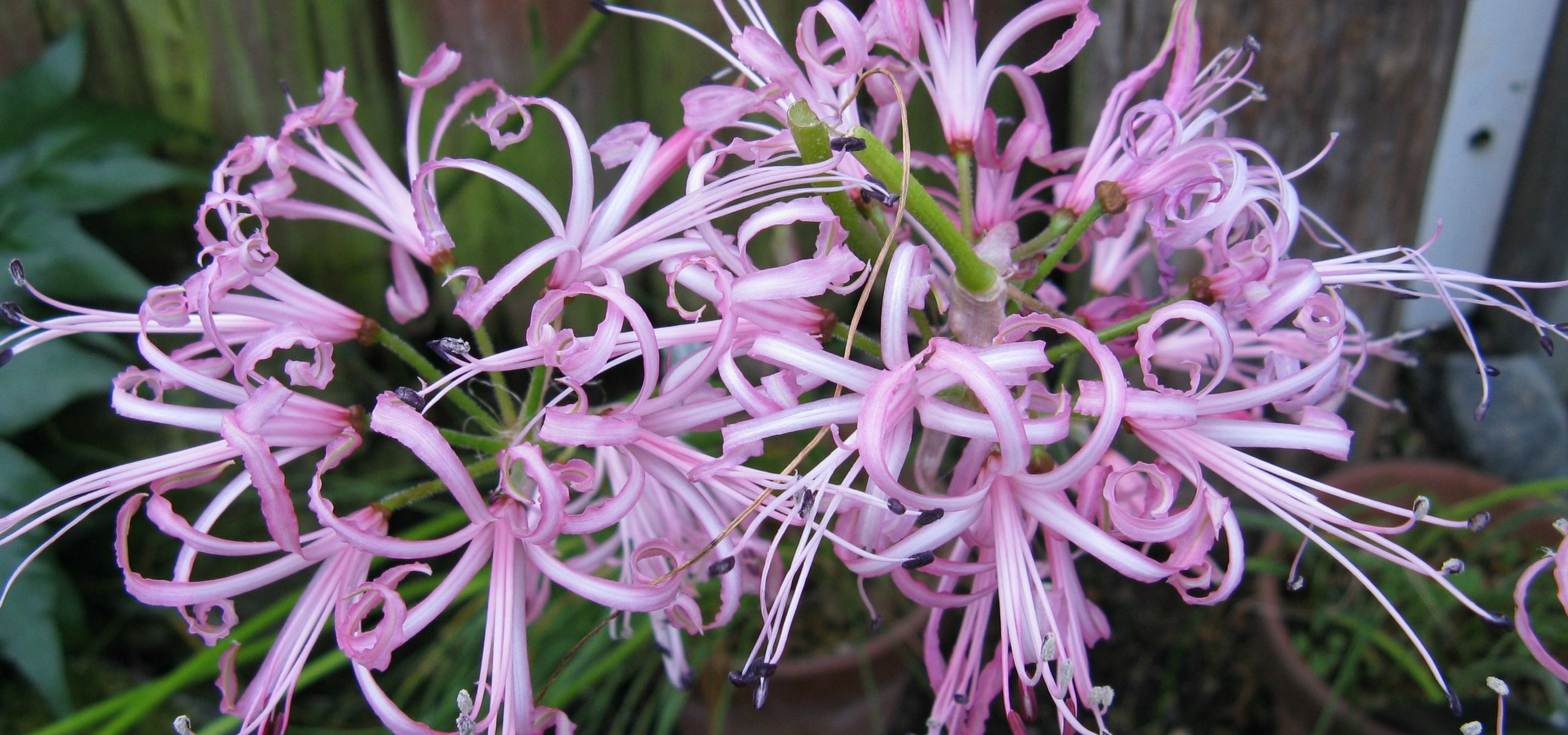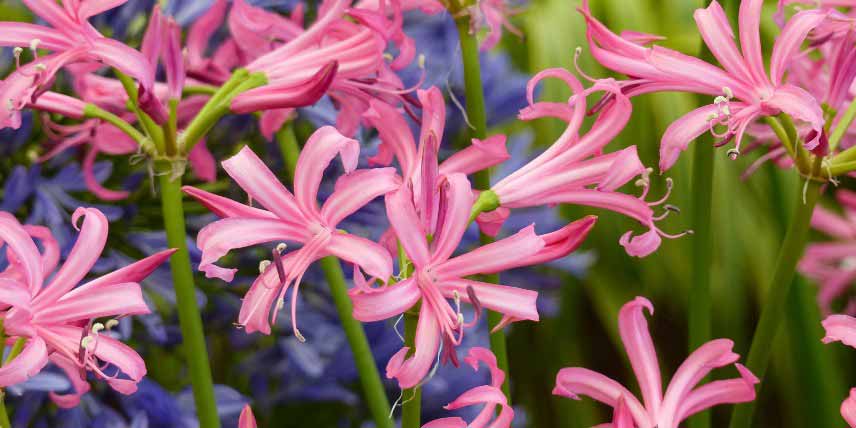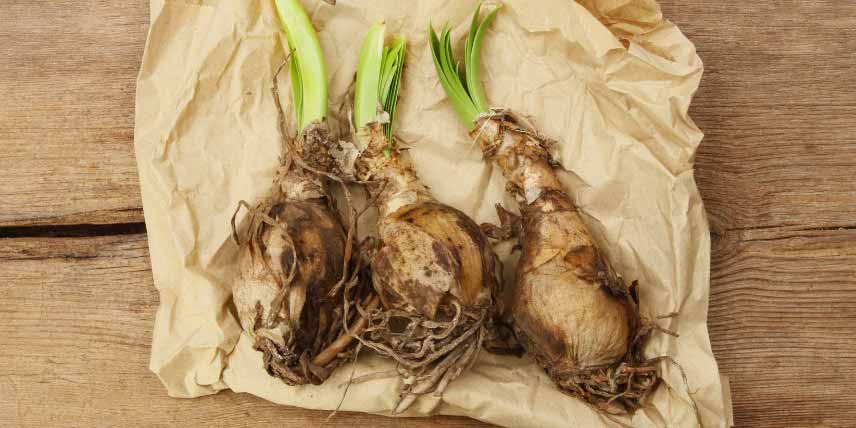
Planting Nerines
Where and how?
Contents
Nerines, also known as “Guernsey lilies”, are bulbous plants that produce delicate and elegant flowers, often trumpet-shaped, in vibrant shades ranging from pink to red. Their late flowering, in autumn, adds a splash of bright colour to the garden at a time when many other plants are preparing for winter. Planting nerine bulbs requires some specific care, but the result is well worth the effort. Let’s discover how to successfully plant and care for them!
→ If you want to learn more about nerines in general, read Nerine, Guernsey Lily: planting, cultivation and care.
What are nerines?
Nerines (Nerine) are bulbous perennial plants primarily native to South Africa. Their foliage is often slender and strap-like, while their flowers appear on upright, leafless stems, making them particularly graceful. They are valued for their ability to flower late in the season, typically from September to November, when few plants still offer a beautiful display. The most common varieties are derived from the species Nerine bowdenii, which are very hardy and well-suited to our temperate climates.

The flowering of Nerine bowdenii
When to plant nerines?
Nerine bulbs should be planted in spring, ideally between March and May. This allows them time to root before the arrival of summer heat.
It is also possible to plant them in autumn, especially in regions where winters are not too harsh, but this is not the ideal time.
Where to plant nerines?
Nerines particularly appreciate full sun locations, as they love heat and light. In a garden, they will be perfect in a well-exposed flowerbed or at the foot of a wall that reflects heat. They grow at the edge, in rock gardens or along paths.
Choosing the planting substrate
Like many bulbs, nerines enjoy very well-drained, rich, and light soils and are hardy when moisture does not stagnate in winter.
Planting method
Plant them in the sun, at a depth of 10 cm, spaced 8 cm apart, and add pure sand to the planting if necessary. Water very moderately. In regions north of the Loire, it is preferable to grow them in pots that you will shelter in winter.

Nerine Bulbs
In the Ground
- Prepare the soil: loosen the soil to a depth of about 20 cm. If necessary, improve drainage with compost or gravel.
- Space the bulbs: bulbs should be planted in groups for a beautiful visual effect. Space them 10 to 15 cm apart.
- Planting depth: unlike other bulbs, nerine bulbs should not be completely buried. Plant them with their upper end just at the surface of the soil, or barely covered with soil (no more than 2-3 cm).
- Lightly compact and water: once planted, gently compact the soil around the bulbs and water lightly to help them root, but do not soak them.
In a Pot
Choose a pot with a diameter of at least 20 to 30 cm. If you want to plant several bulbs in the same pot, opt for an even larger container, as it is important to leave 10 to 15 cm of space between each bulb. The pot should be deep enough (at least 20 cm) to allow the roots to develop properly. And make sure the pot has drainage holes at the bottom.
- Recommended substrate: use a mix of universal potting soil mixed with a good proportion of sand or perlite to ensure effective drainage. A good ratio is 2/3 universal potting soil to 1/3 sand.
- Planting depth: in pots, nerine bulbs should be planted with their upper end (the “neck”) visible at the surface of the substrate, or barely covered (1 to 2 cm maximum). Nerines do not like to be buried too deeply.
- Spacing: if you are planting several bulbs in the same pot, leave 10 to 15 cm of spacing between each bulb to avoid competition between the plants.
- Watering: water lightly after planting the bulbs, but avoid soaking the substrate. Excess moisture is the main cause of bulb rot. Afterwards, allow the substrate to dry between waterings, especially during the summer period.
Post-planting care
Nerines require relatively little maintenance after planting, but a few simple actions will ensure a beautiful flowering:
- Watering: after planting, allow the soil to dry out between waterings, especially in summer. Absolutely avoid excess moisture. Nerines cope well with drought.
- Mulching: in winter, in cold regions, mulching can be useful to protect the bulbs from frost, although they generally tolerate temperatures down to -10 °C for Nerine bowdenii.
- Clump division: nerines can remain in place for several years. If flowering decreases, consider dividing the clumps after flowering or in spring, every 4 to 5 years.
- Fertiliser: nerines do not require much fertiliser. A light application of flowering plant fertiliser in spring, just after the first shoots appear, can stimulate their growth, but remain moderate.
- Subscribe!
- Contents






























